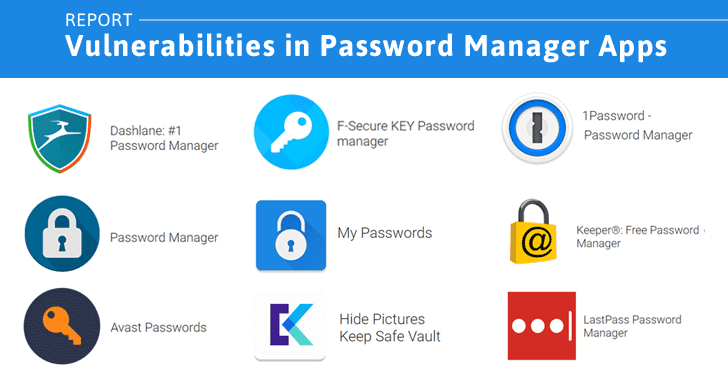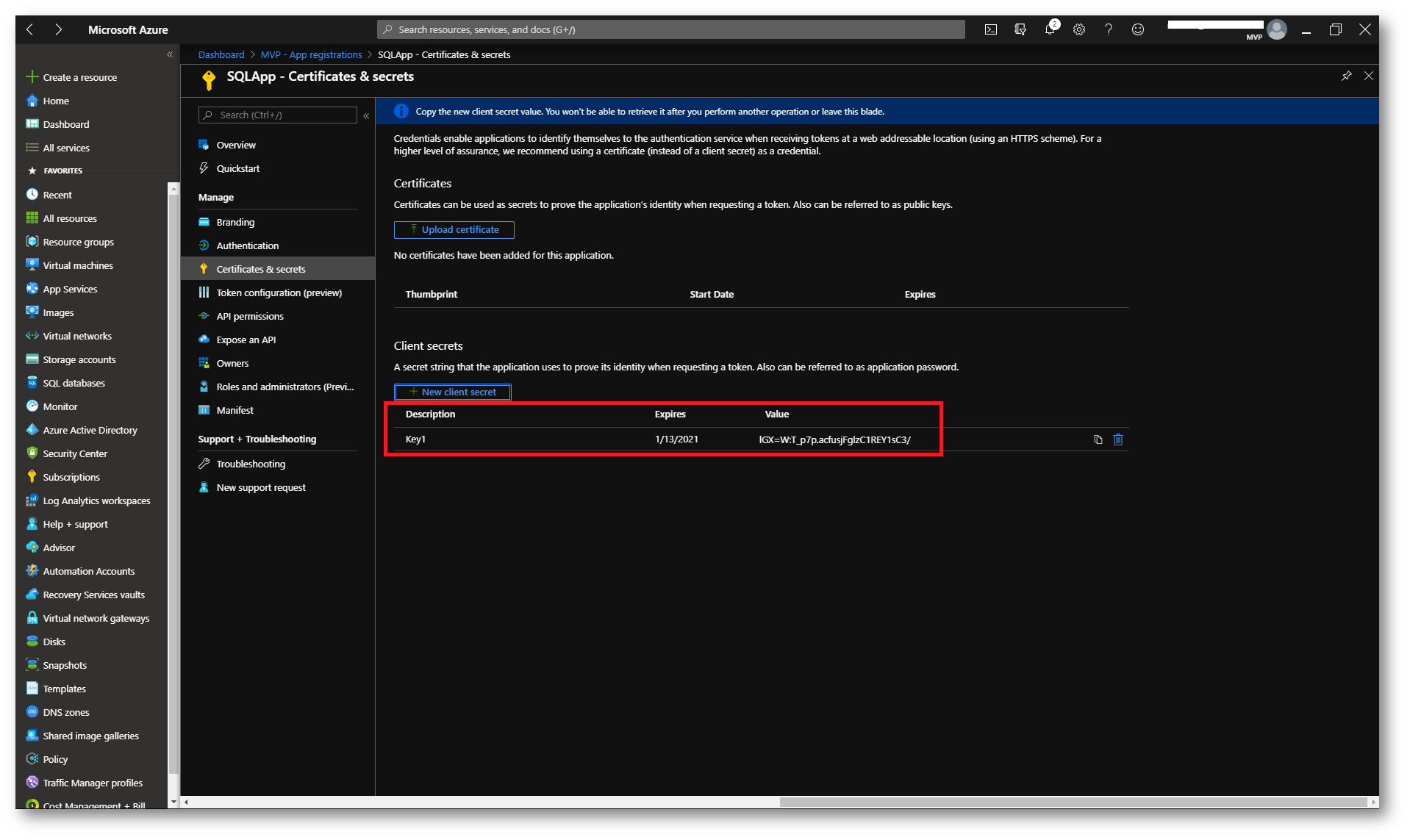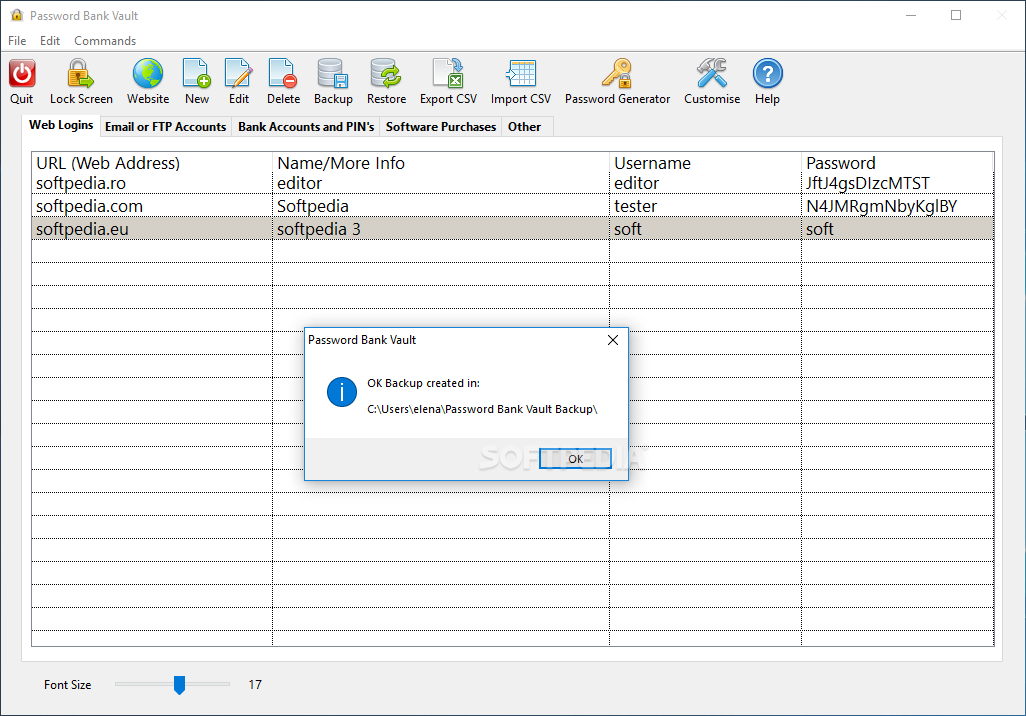

You then need to generate a credential that Vault will use to connect to and manage the Key Vault. To follow this tutorial, you must configure an Azure Key Vault instance and assign an access policy that provides the key management policy to a service principal.

You will configure a Microsoft Azure Key Vault instance, then use the Vault CLI, HTTP API or web UI to configure a Vault development mode server and enable management of the Key Vault key with the Key Management secrets engine.Īfter initial configuration, you will perform some lifecycle operations with the secrets engine, like writing, reading, updating, and rotating keys.

The Vault dev server is now ready for use. Refer to Dev Options to learn more about Vault dev server options. As a best practice, use an authentication method or token that Recommended that root tokens are only used for enough initial setup or inĮmergencies. NOTE: For these tasks, you can use Vault's root token. The admin tasks require these capabilities. If you are not familiar with policies, complete the Vault Enterprise with the Advanced Data Protection Module at version 1.6 or later.Įach persona requires a different set of capabilities.A Microsoft Azure account with sufficient permissions to manage applications, service principles, and key vaults.To perform the tasks described in this tutorial, you need to have: admin a user with with privileged permissions to configure secrets engines.The end-to-end scenario described in this tutorial involves one persona: Google Cloud Platform Cloud Key Management Service.The Vault Key Management Secrets Engine provides distribution and lifecycle management features for cloud provider keys.Ĭurrently, it manages keys for the following cloud providers. You need to use security features of cloud providers, which involve encryption keys issued and stored by the provider in its own key management system (KMS), but you must also maintain root of trust and control of the encryption key lifecycle.
KEY VAULT PASSWORD MANAGER TRIAL
The web server and the RDBMS have to reside in separate servers, the configurationĮnforces connections only from configured IP addresses.NOTE: Key Management Secrets Engine requires Vault Enterprise AdvancedĮnterprise features, you can sign up for a free 30-day trial from The RDBMS is always configured to accept only secure connections (forces SSL mode forĬlient connections) and clients can connect only from the same local host. This makes the vaulting mechanism secure byĭesign. Leaving the key accessible only to the server. Like the installation master key, the database key can also be stored in any secure location, Master keys as a best practice, with easy options to automate the rotation.
KEY VAULT PASSWORD MANAGER PRO
Password Manager Pro also enforces periodic rotation of installation Thus, the key is held only in the server memoryĪnd never written. To the server during application start-up. Installation master key in a physically separate server or device to ensure that it is available The encryption key and encrypted data do not reside together. Byĭefault, the installation master key cannot be kept in the installation folder, ensuring that Password Manager Pro uses two keys: an installation master key and a database key. Isolate encryption keys from your data for safekeeping. To the back-end database for storage, where the next level of encryption takes place, again Password Manager Pro then pushes the encrypted data

The first-level encryption key, which isĪuto-generated and unique for every installation, encrypts the data using the AES-256Īlgorithm at the application level. Password Manager Pro encrypts data twice: once at the application level and again at theĭatabase level, both with built-in AES 256 functions. Dual encryption of data for extreme security. When it comes to securing super-sensitive information. Strongest-known encryption algorithm to date, AES-256 is an obvious choice for enterprises Standards and Technology (NIST) and the National Security Agency (NSA) as the Acknowledged by both the National Institute of Resource credentials, digital keys, and files. Password Manager Pro uses 256-bit Advanced Encryption Standard (AES) to protect Store your privileged passwords in a centralized vault, protected with AES-256 encryption. A strong vaulting mechanism, AES-256 encryption, dual encryption,Įncryption key isolation, and other standard good practices ensure rock-solid data security. Password Manager Pro serves as a centralized repository for organizations to consolidate


 0 kommentar(er)
0 kommentar(er)
